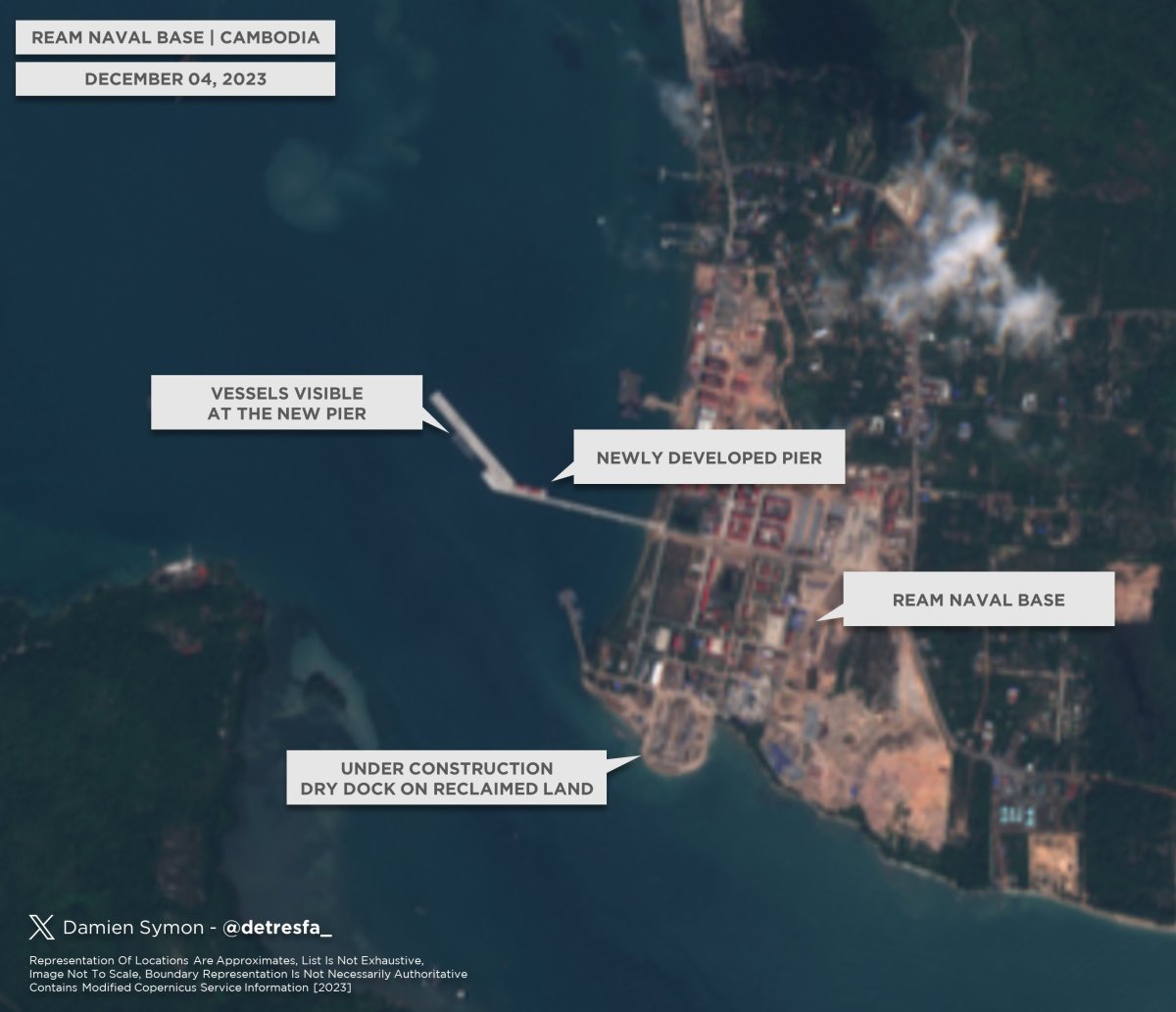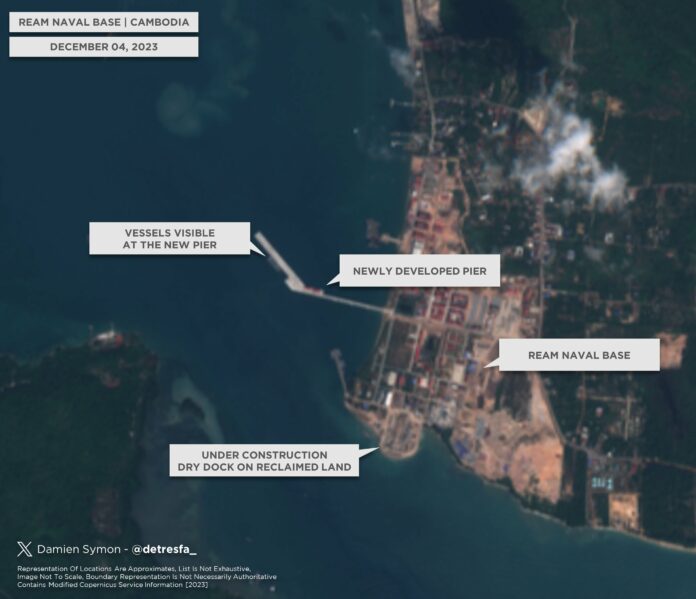Chinese warships have arrived at Cambodia’s Ream Naval Base, signaling deepening military ties and marking the first instance of a foreign naval presence at this strategic location.
The development, reported by Radio Free Asia (RFA), comes amid ongoing construction at the base with support from Beijing, underscoring Beijing’s outward naval expansion into Southeast Asia.
The speculation about the presence of Chinese naval vessels at the Ream Naval Base started after open-source satellite enthusiasts noticed the presence of ships at the port, which had been undergoing construction, for the first time.
The presence of Chinese warships at the Ream Naval Base is a tangible manifestation of the growing military dimension of Cambodia-China relations. This development is significant not only for the two countries involved but also for the broader geopolitical dynamics in Southeast Asia.
The U.S. State Department has said it is monitoring the presence of Chinese vessels in Cambodia.
“While we have no comment on this specific development, we have serious concerns about the PRC’s plans for exclusive control over portions of Ream Naval Base,” a State Department spokesperson said on Wednesday.
Cambodian Minister of Defense Tea Seiha shared on Facebook his recent visit to the naval base with his father, Tea Banh, who previously held the same position. This familial connection underscores the long-standing ties between the Cambodian military and political leadership.
“Although the exact number of People’s Liberation Army (PLA) naval ships present at Ream and the duration of the training remains undisclosed, at least two boats were visible in the photos shared by Seiha,” the Khmer Times reported.
At least two ships were visible in the photos shared by Seiha on Facebook, which were confirmed by the Associated Press.
Satellite photos by imagery provider Planet Labs seen on Sunday show what appear to be two Chinese warships docked at the base.
A Cambodian official confirmed the arrival of Chinese vessels for training purposes. This event coincides with the visit of a Chinese general to Phnom Penh, which is expected to cement the burgeoning partnership between the two nations.
TEA Seiha Facebook
Cambodia’s defense minister said the Chinese ships were in the country to train its navy.
“China’s collaboration in training our Cambodian Navy is a testament to the strong and enduring friendship between our two nations. We are confident that this training program will further enhance our naval capabilities and contribute to regional stability,” Seiha said in a statement.
Recent satellite imagery revealed significant developments at the Ream Naval Base near Sihanoukville, Cambodia’s coastal city. According to maritime security analyst H.I. Sutton, a new dry dock is under construction at a site suspected of developing infrastructure to accommodate PLA warships and submarines.

@detresfa_/X
This military cooperation is part of a broader context of Cambodia-China relations, heavily influenced by economic factors. Cambodia has been recognized as a country with a “risk of debt distress” by the Center for Global Development, a U.S.-based nonprofit.
This categorization stems from Cambodia’s substantial debt owed to Beijing. Currently, Phnom Penh owes around $3.9 billion to China, a significant portion of Cambodia’s over $10.2 billion in foreign debt, as reported in Cambodia’s Public Debt Statistical Bulletin.
China’s financial investment in Cambodia has been substantial, particularly in infrastructure and development projects. This investment has often been viewed as part of China’s Belt and Road Initiative, which aims to expand China’s global economic and strategic influence.
Uncommon Knowledge
Newsweek is committed to challenging conventional wisdom and finding connections in the search for common ground.
Newsweek is committed to challenging conventional wisdom and finding connections in the search for common ground.


